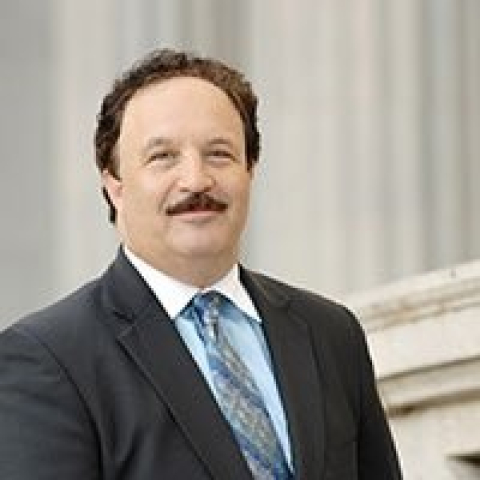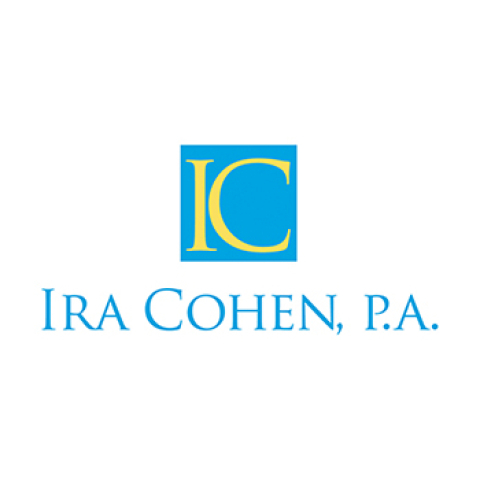A Trademark Two-Fer: Trademark Office Metrics; Take-Aways And Tips For Trademark Practitioners
The Patent and Trademark Office in the United States has been around in one incarnation or another since July 4, 1836. For most of that time, the office was situated in Washington, D.C.
At present, the United States Patent and Trademark Office (“USPTO”) is headquartered in the James Madison Building on USPTO’s spacious campus consisting of eleven buildings in a city-like development surrounded by ground floor retail and high-rise residential buildings in Alexandria, Virginia. Additionally, there are also USPTO satellite offices in Detroit and Silicon Valley. The USPTO occupies several interconnected buildings in Alexandria, Virginia. The office employs more than 13,000 people -- including engineers, scientists, attorneys, analysts, computer specialists -- all dedicated to protecting U.S. intellectual property rights.
The current Director (since April 13, 2022) of USPTO is Kathi Vidal, formerly an Engineer and Intellectual Property lawyer, who concurrently serves as Under Secretary of Commerce for Intellectual Property (since April 19, 2022). She also was a former Law Clerk to the Hon. Alvin A. Schall, an appellate judge sitting on the Court of Appeals for the Federal Circuit. David S. Gooder is the Commissioner for Trademarks.
The legal predicate authorizing trademark law is the Commerce Clause in of Article I of the U.S. Constitution, which gives Congress to regulate trade.
The Congress shall have Power To lay and collect Taxes, Duties, Imposts and Excises, to pay the Debts and provide for the common Defence and general Welfare of the United States; but all Duties, Imposts and Excises shall be uniform throughout the United States;
To borrow Money on the credit of the United States;
To regulate Commerce with foreign Nations, and among the several States, and with the Indian Tribes…” [i] (emphasis added)
A trademark is a word, name, symbol, device, or any combination thereof, that is used in trade with goods to indicate the source of the goods and to distinguish them from the goods of others. A service mark is the same as a trademark, except that it identifies and distinguishes the source of a service rather than a product. The terms “trademark” and “mark” are commonly used to refer to both trademarks and service marks. Trademark rights can prevent others from using a confusingly similar mark, but not from making the same goods or from selling the same goods or services under a clearly different mark. Trademarks that are used in interstate or foreign commerce may be registered with the USPTO. The registration procedure for trademarks and general information concerning trademarks can be found at Trademark Basics (www.USPTO.gov )
In the U.S., trademarks are granted for a term of ten (10 years. They are thereafter subject to renewal, ad infinitum.
The USPTO examines applications for trademark registration, which can be filed under five different filing bases: use in commerce, intent to use, foreign application, foreign registration, or international registration. If approved, the trademarks are registered on either the Principal Register or the Supplemental Register, depending upon whether the mark meets the appropriate distinctiveness criteria. This federal system governs goods and services distributed via interstate commerce and operates alongside state level trademark registration systems.
Trademark applications have grown substantially in recent years, jumping from 296,490 new applications in 2000,[ii] to 345,000 new applications in 2014, to 458,103 new applications in 2018.
Recent growth has been driven partially by growing numbers of trademark applications originating in China; trademark applications from China have grown more than 12-fold since 2013, and in 2017, one in every nine trademark applications reviewed by the U.S. Trademark Office originated in China.[iii]
In 2020, trademark applications marked the sharpest declines and inclines in American history. During the spring, COVID-19 lockdowns led to reduced filings, which then increased in July 2020 to exceed the previous year. August 2020 was subsequently the highest month of trademark filings in the history of the U.S. Patent and Trademark Office.
The following historical USPTO figures were derived straight from the horse’s mouth, namely, the USPTO’s various Performance and Accountability Reports for FY2007 through FY 2022 (archived at www.USPTO.gov ).
Back in 2007, there were 8,913 USPTO employees. Of those, 404 were Trademark Examining Attorneys (a/k/a Trademark Examiners). In total, there were 394,368 trademark filings.
By 2010, there were 9,507 USPTO employees. Of those, 378 were Trademark Examiners. The number of total trademark filings was 378.
By 2015, there were 12,667 USPTO employees. Of those, there were 456 Trademark Examiners. The number of total trademark filings was 503,889.
By the end of FY 2018, there were 12,579 employees, of which 579 were Trademark Examiners.
By 2020, there were 12,928 USPTO employees. Of those, 622 were Examiners. The number of total trademark filings was 738,112.
In 2021, there were 12,963 USPTO employees. Of those, 662 were Trademark Examiners. In all, there were 943,928 trademark filings.
More recently, in 2022, there were 13,103 USPTO employees. Of those, there were 718 Trademark Examiners. In total, there were 787,798 trademark filings.
The USPTO Trademark Examiners are reasonably compensated. As of December 10, 2023, the average annual pay for a Trademark Examiner in the United States is $61,362 a year. Depending upon tenure, experience, skill level, and location, the range is from $68,000 to $107,000. The estimated total median pay for an Examiner (GS-12) at US Patent and Trademark Office is $85,506 per year.
Trademark applicants encounter refusals from the United States Patent and Trademark Office (“USPTO”) based on a myriad of issues. Section 2(d) likelihood of confusion refusals and Section 2(e)(1) mere descriptiveness refusals or disclaimer requirements based on descriptiveness are commonly issued by the USPTO.
The Board consistently reminds us, for better or for worse, that each case must be decided on its own merits. But for those trying to read the tea leaves, it’s hard to discount the seemingly uphill battle of an appeal. The affirmance rates for the Examiners seem to be in the high 80% to low 90% range. Therefore, the Board’s affirmance rates, along with the pertinent facts of each case, should strongly be considered when deciding to file an appeal. Subsequent appeals are directed to the Federal Circuit, or a civil action in U.S. District may also be brought.
The publicly available data provided by the USPTO tells us quite a bit that can be useful to trademark practitioners.[iv] The following statistics have been culled from that public information published by USPTO.
USPTO Inventory, Unexamined New Applications
Q4 2023 526,160
Compare with:
Q 2021- 333,100
Fiscal Year Application Filings
2023 737,018
2022 787,795
2021 943,928
2020 738,112
Application Filing Basis
Q4 2023
Use: 40%
I/T/U: 45%
Compare with:
Q1 2021
Use: 55%
I/T/U: 35 %
Types of Applications
TEAS Plus: 381,747
TEAS Std: 285,513
Madrid: 69,758
First Action Pendency
Q4 2023 First Action Pendency: 8.5 months
Compare with:
Q1 of 2021
First Action Pendency: 4 months
Total Pendency of Applications:
Q4 Total Pendency: 14.6 months
Compare with:
Q1 2021 Total Pendency: 9.8 months
Pendency Including Suspended and Inter Partes Proceedings at TTAB
Q4-2023 15.9 months
Compare with:
Q1 2012- 11.4 months
First Action Quality (Error free decisions)
Q4 2021 94 %
Q4 2023 98.6%
Percentage of Applications Approved Upon First Action
Q4 2023
TEAS Plus 40.5 %
TEAS Standard 12.9 %
Madrid 2.4 %
Paper- 34.2 %
Total Pendency by Filing Method (months)
Q4 2023
TEAS Plus 13.8 months
Teas Std 15.5 months
Madrid 15.7 months
Paper- 37.5 months
USPTO’s Initial Processing of Statements of Use Submitted
Q4- 2023 9 days
Compare with:
Q1 2021- 15 days
USPTO Post-Renewal Pendency
Q4 2023 155 days
Compare with:
Q1 2021 48 days
Final Action Quality
Q4 2023: 98.6%
Compare with:
Q 2021: 99%
Active Registrations
Q4 2023 3,151,009
Compare with:
Q1 2021 More than 2.5 million
NEW REGISTRATIONS BY FY
2023 414,043
2022 453,588
2021 434,810
2020 400,298
USPTO Inventory, Pending Applications
Q4 2023: 1,364,577
Compare with:
Q1 2021: 1,036765
TAKE-AWAYS AND TIPS FOR TRADEMARK PRACTITIONERS NAVIGATING USPTO PRACTICES AND PROCEDURES
Learn or confirm what kind of IP you are dealing with in the IP Identifier (Basic and Advanced). Coming soon! “Tips for managing your IP Assets.”[v]
Review USPTO’s “Online Trademark tools.”[vi]
For an overview on trademark basics, understanding the application process, preparing to file an application, filing an application moving through the application process, and keeping a registration alive, check out the Registration Toolkit.[vii]
File TEAS PLUS Applications whenever possible.
Do not file paper Applications.
File I/T/U Applications whenever possible.
Take advantage of USPTO’s Practice Tips page[viii]
Subscribe to receive Trademark Alert Emails from USPTO[ix]
To access the proper place to conduct a trademark search, refer to the USPTO’s “Search our trademark database” page.[x]
For more information about applying for a trademark online, consult USPTO’s “Apply online” website page.[xi]
Conduct (or commission) a proper search for trademark conflicts.
Utilize the USPTO’s trademark database which contains the records of all active and inactive trademark applications and registrations.[xii]
Avoid applying for registration of merely descriptive marks.
Avoid applying for registration of generic marks.
Avoid applying for registration of commonly used phrases.
Do not apply for registration of a mark which includes a living person’s name unless you have their binding written consent.
Do not apply for a mark that consists merely of a surname.
File and submit your trademark applications and other application-related, and maintenance form (Statement of Use, Sections 8 and 15 Declarations, Sections 8 & 9 Declarations, etc.) through the Trademark Electronic Application System “TEAS”).[xiii]
Check and view documents by virtue of the Trademark Status and Document Retrieval System (“TSDR”).[xiv]
For a searchable listing of the proper articulation of goods and services, refer to the Acceptable Identifications of Goods and Services Manual (a/k/a “Trademark ID Manual”).[xv]
In order to search the trademark database for designs, use the Trademark Design Search Code Manual, wherein all figurative designs are assigned numerical codes for searching purposes.[xvi]
Your go-to resource for all the procedures and guidelines used by and referred to by the Trademark Examiners is The Trademark Manual of Examining Procedure (“TMEP”).[xvii]
Submit proper specimens (the correct type for goods or services, as appropriate) and that show use of the mark in commerce.
Identify the proper party as the trademark proprietor.
Correctly identify the goods or services involved.
If expedited processing is necessary, think about a Petition to Make Special.
Apply for the “genus” of goods unless you really need to start identifying “species” of goods within the genus.
Do not combine multiple classes in applications.
Do not file hybrid use/intent to use applications.
For discussion of typical issues raised by Trademark Examiners in initial Office Actions, see USPTO’s “Common problems in applications” page.[xviii]
Take advantage, where applicable of TTAB Ex Partes Appeals.[xix]
Where applicable, take advantage of USPTO Inter Partes Opposition procedures.[xx]
Where applicable, take advantage of USPTO Inter Partes Cancellation procedures.[xxi]
Where necessary or desirable, take advantage of the optional three (3) month extensions (for a fee) to respond to an Office Action.
For tips on responding to Examining Attorneys’ decisions, refer to “Responding to Office Actions.”[xxii]
When necessary or desirable, contact the Examining Attorney on an application file.
When the Examining Attorney cannot be reached, or is not responsive, contact the Examining Attorney’s Supervisor.
After a preliminary approval by the Examiner, a mark is published in the USPTO’s Trademark Official Gazette (“TMOG”), a weekly publication used to, among things, commence the mark’s opposition period.[xxiii]
It is possible, under certain circumstances, to revive an abandoned application.[xxiv]
Rather than an ex parte appeal, file another Application.
To order certified copies of documents from USPTO, refer to the Certified Copy Center.[xxv]
Regarding Letters of Protest, see USPTO’s “Letter of protest practice tip” page.[xxvi]
For general questions or technical assistance, contact the Trademark Assistance Center (“TAC”)[xxvii]
For all of your USPTO Contact Needs, check out the USPTO’s Contact Trademarks page[xxviii]
For information about the Trademark Trial and Appeal Board (“TTAB”), review the main website page for the TTAB.[xxix]
Research public information about trademark-related decisions and proceedings issued by or conducted under the authority of the Commissioner for Trademarks or the Director of the USPTO (i.e., Expungement/Reexamination Proceedings, Administrative Orders and Sanctions, and Precedential Director Decisions) in the Trademark Decisions and Proceedings search tool.[xxx]
- "The United States Constitution". The U.S. National Archives. January 2014. Retrieved Dec. 25, 2023.
[ii] USPTO Annual Report FY2000, www.USPTO.gov Retrieved Dec. 24, 2023.
[iii] Gershman, Jacob (2018-05-05). "Flood of Trademark Applications From China Alarms U.S. Officials". Wall Street Journal. ISSN 0099-9660. Retrieved 2019-01-14.
[iv] See, generally, the USPTO Dashboard at www.uspto.gov/dashboard/trademarks for more recent and current information about USPTO’s processing of U.S. trademark applications.
[v] https://ipidentifier.uspto.gov/#/identifier/welcome
[vi] https://www.uspto.gov/trademarks/basics/online-tools \
[vii] https://www.uspto.gov/sites/default/files/documents/TM-Registration-Toolkit
[viii] https://www.uspto.gov/trademarks/guides-manuals-resources/practice-tips
[ix] https://www.uspto.gov/trademarks/trademark-updates-and-announcements/subscribing-trademark-alert-emails
[x] https://www.uspto.gov/trademarks/search
[xi] https://www.uspto.gov/trademarks/apply
[xii] https://www.uspto.gov/trademarks/basics/online-tools
[xiii] https://www.uspto.gov/trademarks/apply
[xv] https://idm-tmng.uspto.gov/id-master-list-public.html
[xvi] https://tmdesigncodes.uspto.gov/
[xvii] https://tmep.uspto.gov/RDMS/TMEP/current
[xviii] https://www.uspto.gov/trademarks/basics/common-problems
[xix] https://www.uspto.gov/trademarks/trademark-trial-and-appeal-board/about-ttab
[xx] https://www.uspto.gov/trademarks/trademark-trial-and-appeal-board/about-ttab
[xxi] https://www.uspto.gov/trademarks/trademark-trial-and-appeal-board/about-ttab
[xxii] https://www.uspto.gov/trademarks/maintain/responding-office-actions
[xxiii] https://eog-tmng.uspto.gov/#issues=2023-12-26&pubReason=OPPOSITION&limit=20&orderBy=SERIAL_NR&view=review&subview=tile
[xxiv] h https://www.uspto.gov/trademarks/trademark-trial-and-appeal-board/about-ttab ttps://www.uspto.gov/trademarks/apply/reviving-abandoned-application
[xxv] https://certifiedcopycenter.uspto.gov/
[xxvi] https://www.uspto.gov/trademarks/trademark-updates-and-announcements/letter-protest-practice-tip
[xxvii] https://www.uspto.gov/learning-and-resources/support-centers/trademark-assistance-center
[xxviii] https://www.uspto.gov/trademarks/contact-trademarks
[xxix] https://www.uspto.gov/trademarks/ttab
[xxx] https://developer.uspto.gov/tm-decisions/search/expungement
- First published in The IP Examiner™, a publication of the Intellectual Property LAW Section of the Federal Bar Association, in the Winter 2024 Issue.
Do you want more information?
 Ira Cohen
Ira CohenIra Cohen is the Founder and Principal of Ira Cohen, P.A. Ira earned his first law degree (J.D.) in 1981 and a second law degree (LL.M.) in 1985. He is a member of the Florida and New York Bars and has been practicing law for over 43 years. He is rated AV Pre-Eminent by Martindale Hubbell. Ira is a Chair Emeritus of the Intellectual Property Law Section ("IPLS") of the Federal Bar Association ("FBA") and has lectured on IP subjects many times.

